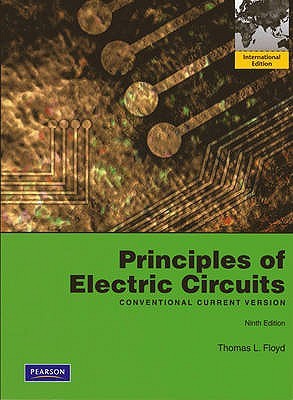A.C. Fundamentals

Here you can find resources for the units, commonly known as A.C. (Alternating Current) Fundamentals. A good book to use for this delivery is:
Floyd, T. L. (2010). Principles of Electrical Circuits: Conventional Current Flow (9th ed.). Upper Saddle River, N.J: Pearson Prentice Hall.
If you have already studied the subject D.C. Fundamentals, then you already know how to use this book. In this semester we continue with the following chapters:
Chapter 10. Magnetism and Electromagnetism. If you are enrolled only in the unit UEENEEG001B Solve Problems in Electromagnetic Circuits, then you need to study just this one chapter from the book. From the AC Mid-Semester Trial Test for weeks 9 and 10 you need to study the questions, given on the first two pages only (i.e. just the first six questions).
Chapter 11. Introduction to Alternating Current and Voltage.
Chapter 12. Capacitors.
Chapter 13. Inductors.
Chapter 14. Transformers.
Chapter 15. RC Circuits.
Chapter 16. RL Circuits.
Chapter 17. RLC Circuits and Resonance.
Since you have passed D.C. Fundamentals, you already know what to bring in class and what to do in order to achieve competency in a quick and efficient manner. Those of you who have already studied the subject D.C. Fundamentals for one semester with us should know the information given in the links below. Those of you, who have this subject RPL-ed (recognition for prior learning), and now attend classes for the first time, need to read it carefully.
For a list of things to bring every time you come to D.C. Fundamentals class, please click here.
For a list of things you need to do, in order to pass D.C. Fundamentals subject, please click here:
The setup is pretty much the same. The only difference is that for your laboratory exercises you will perform your measurements with oscilloscopes and function generators, instead of multimeters. Again, you will be given a lab book with seven exercises and by the end of the semester you will need to obtain a signature from your lecturer for each successful completion. You will need to sit two written tests: one at the end of the term, and the other at the end of the semester. There are two re-test weeks, which you can take off, provided you have completed everything on time, including, of course, all your coursework. The coursework has a weight of 70% and the test account for 30%. The coursework comprises the questions given at the end of each chapter of Floyd, which we study.
Difficult questions, marked with asterisk are exempted. To facilitate your preparations for the tests, I have created two trial tests in a similar fashion, as we did this during your D.C. Fundamentals studies. If you carefully examine all questions and you genuinely understand how to solve them independently, you will have no trouble on the actual tests at all. Please note, that the trial tests given here contain a variety of different problems. In real tests you will be required to solve only about a third of the questions, presented here.
To prepare successfully for the test, please download the relevant test, print it and try your best to answer all the questions in the blank spaces provided. Then download the solutions, print it and compare your work with the given answers. Try to mark yourself objectively. It is pointless to give yourself marks, which you don’t deserve, just to make yourself feel better. At the end of the day, you should really understand the content of the subject and that’s all that matters. If you achieve this, then passing the real test will be not a problem at all. Your answers should be pretty much identical to the given solutions.
When solving electrical problems, always label the circuits first, then write the formula, substitute with numbers, calculate the result and specify the measurement units. For small discrepancies deduct yourself some marks. For wrong answers do not give yourself any marks. If your test has many wrong answers then print the trial test again and start over. Please, do this, until you reach satisfactory results. Only then you are done.
